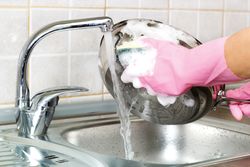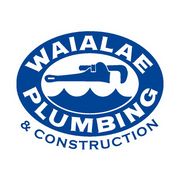A Comparison of Traditional & Tankless Water Heaters

For most homeowners, their water heater is a crucial appliance. So, when it begins to show signs of failing, it’s important to begin weighing all the important characteristics of a new model. For instance, you’ll need to decide between a traditional and tankless setup. The guide below will elaborate on the differences between the two types to help you determine which is the better fit for your home.
Tankless Water Heater
Also known as on-demand water heaters, tankless versions use high-powered burners inside a heat exchanger to rapidly heat water only when it is needed. This removes the need for storing the liquid in a tank.
Pros
After testing several brands of electric and gas tankless and conventional tank water heaters, Consumer Reports found the first type to be 22 more energy efficient than their gas-fired storage-tank counterparts. The U.S. Department of Energy reports this can increase up to 34 percent in homes that use less than 41 gallons of hot water per day.
Cons
The biggest con for installing a tankless water heater is the initial investment costs, especially if you are making the swap from a traditional model. Adding one to your home requires retrofitting the plumbing and, in some cases, also the electrical system.
Another issue is that tankless water heaters have a much lower flow of hot water per minute—3.5 gallons per minute—than traditional versions. As an example, a shower often requires 2.5 GPM, so this could be a problem for households that need to draw water for more than one purpose at a time.
Traditional Water Heater
Most likely, you are familiar with this type of water heater. It requires an insulated tank to store and heat water until needed.
Pros
A conventional storage tank can hold between 30 to 100 gallons of water to meet the needs of any household size. So, you can expect to have hot water any time you need it. Additionally, they are less expensive to install. The electrical versions are less to install than the gas powered, but the latter provides greater energy savings.
Cons
There is always the possibility that the pressure or temperature of the tank could exceed its preset levels. When this happens, the temperature-and pressure-release valve (T&P valve) should automatically trigger to release the excess pressure/temperature.
Traditional models also don’t last as long. On average, they tend to last between 10 and 15 years, whereas tankless units, with proper maintainance, can last over 20 years. It can also be problematic fitting them in tight quarters or oddly-shaped rooms.
Whether you require a storage-tank or tankless model or help deciding between the two, contact our team at Waialae Plumbing & Construction. Since 1994, our plumbers have provided a range of services from leak detection to water heater installations and high-quality renovation and construction plumbing to Honolulu, HI. Visit our website for more information and call us today at (808) 735-8595 to schedule an appointment.
About the Business
Have a question? Ask the experts!
Send your question

